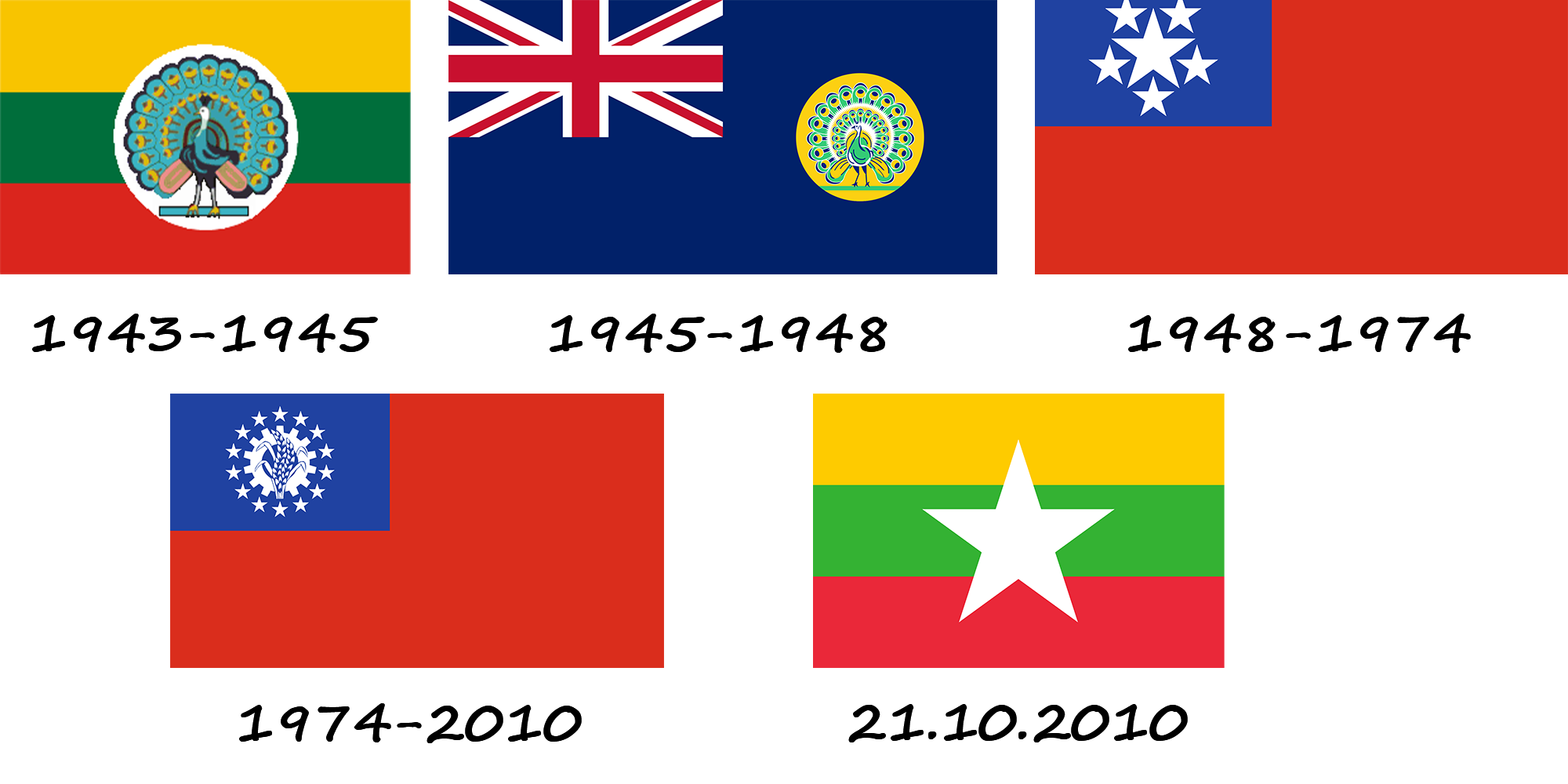The very first flag (1300-1500) had a green background with a yellow diamond. From 1700 to 1885, the flag of the Burmese Empire of the Konbaung Dynasty was completely white with a peacock in the center. In 1824-1939, the British flag (the Union Jack) was used.
The next flag was the flag of British Burma during its separation from India (1939-1941). Later it was used again from January 3, 1945 to 1948 after the end of the Japanese era. It is a flag with a blue background, a small image of the British flag in the upper left corner, and a light green peacock in a yellow circle on the right. From 1943 to 1945, the first flag with a design similar to the current one was used - three horizontal lines of yellow, green and red. In the center of the flag is a peacock in a white circle.
Since 1948, when the country gained independence from Great Britain, it has used a red flag with a large white star in the upper left corner, surrounded by five smaller white stars in a blue rectangle. The large white star symbolizes the nation, and the five smaller stars represent the territories of the five main ethnic groups that gained independence. This flag was used until 1974.

In 1974, it changed it to the flag of the Socialist Republic of the Union of Burma. This flag has a white cogwheel and grain crop that are surrounded by 14 small stars in the center of a blue rectangle. The stars represent the 14 provinces. As for the image of the cogwheel and grain, this symbolism comes from the communist and socialist countries of the time and stands for the slogan "from manual farming to mechanized farming".
The old national flag, which had been in use since 1974, was replaced by the current flag on October 21, 2010. Along with the new flag, the name of the country was changed from Burma to Myanmar in accordance with the 2008 Constitution. The flag design is a white five-pointed star on a background of three horizontal stripes of yellow, green and red. This flag was approved in a referendum in 2008. On October 21, 2010, at exactly 3 p.m. local time, the old flag was removed and a new one was raised. The authorities received an order to burn all the old flags.




